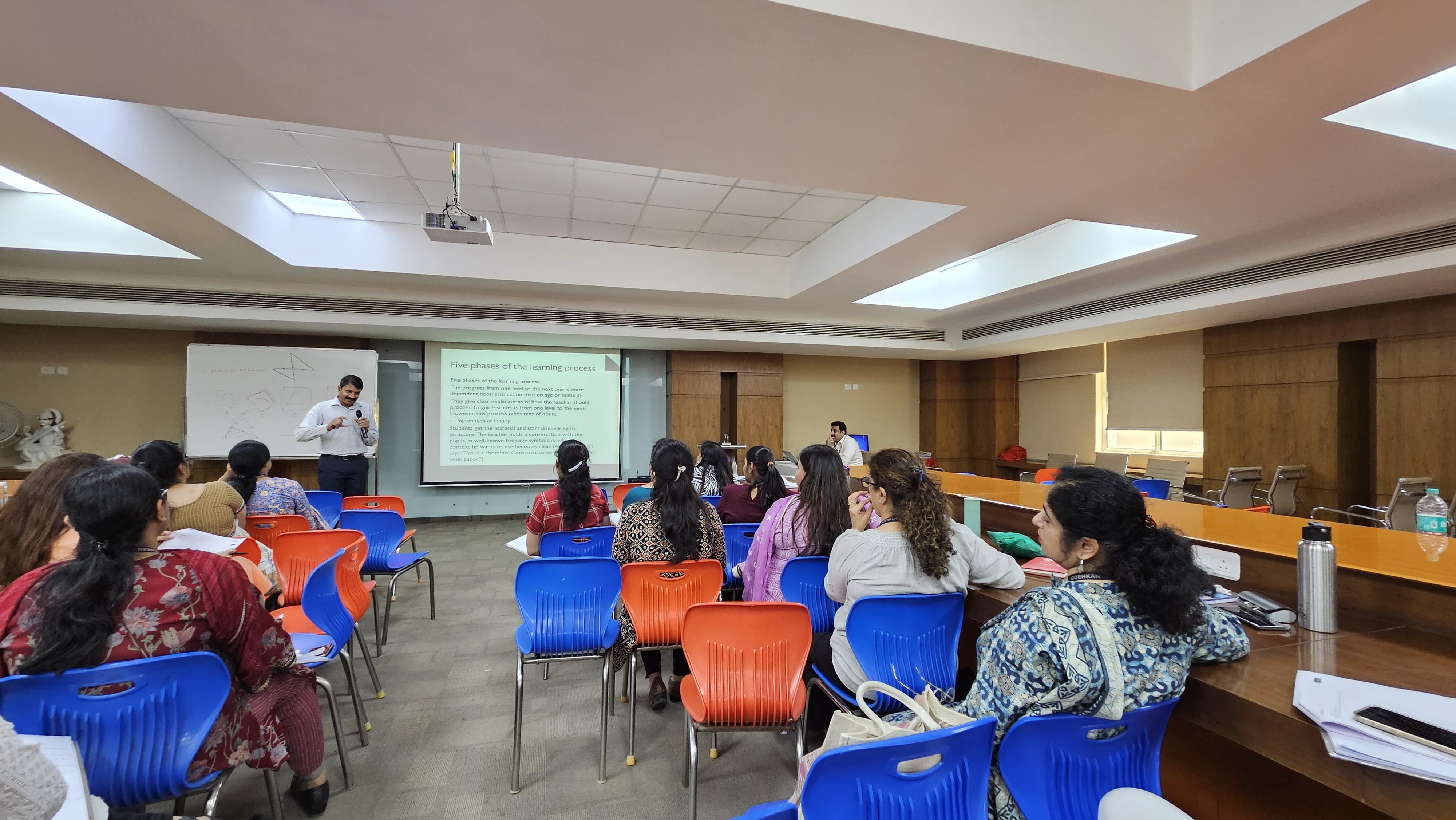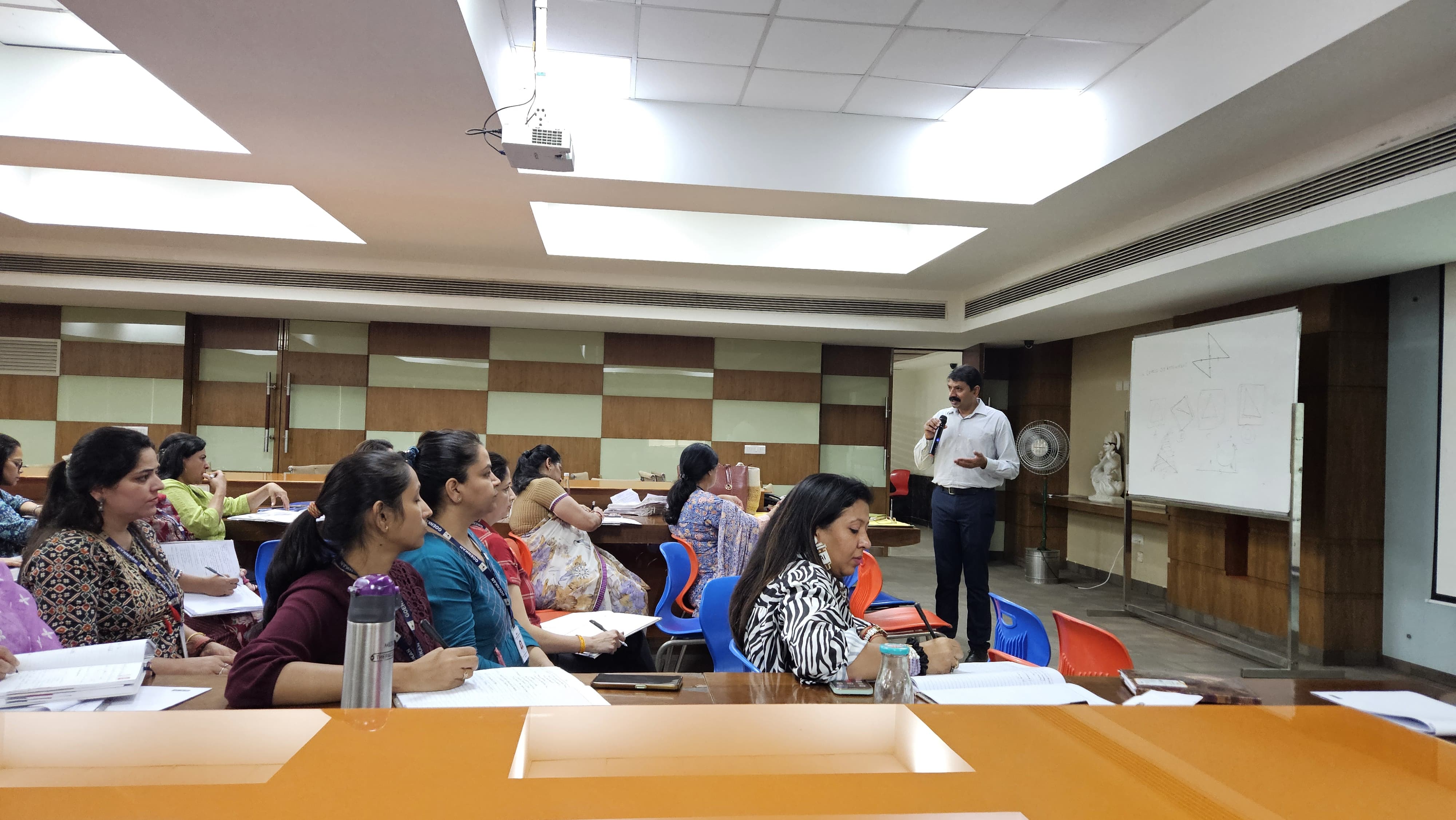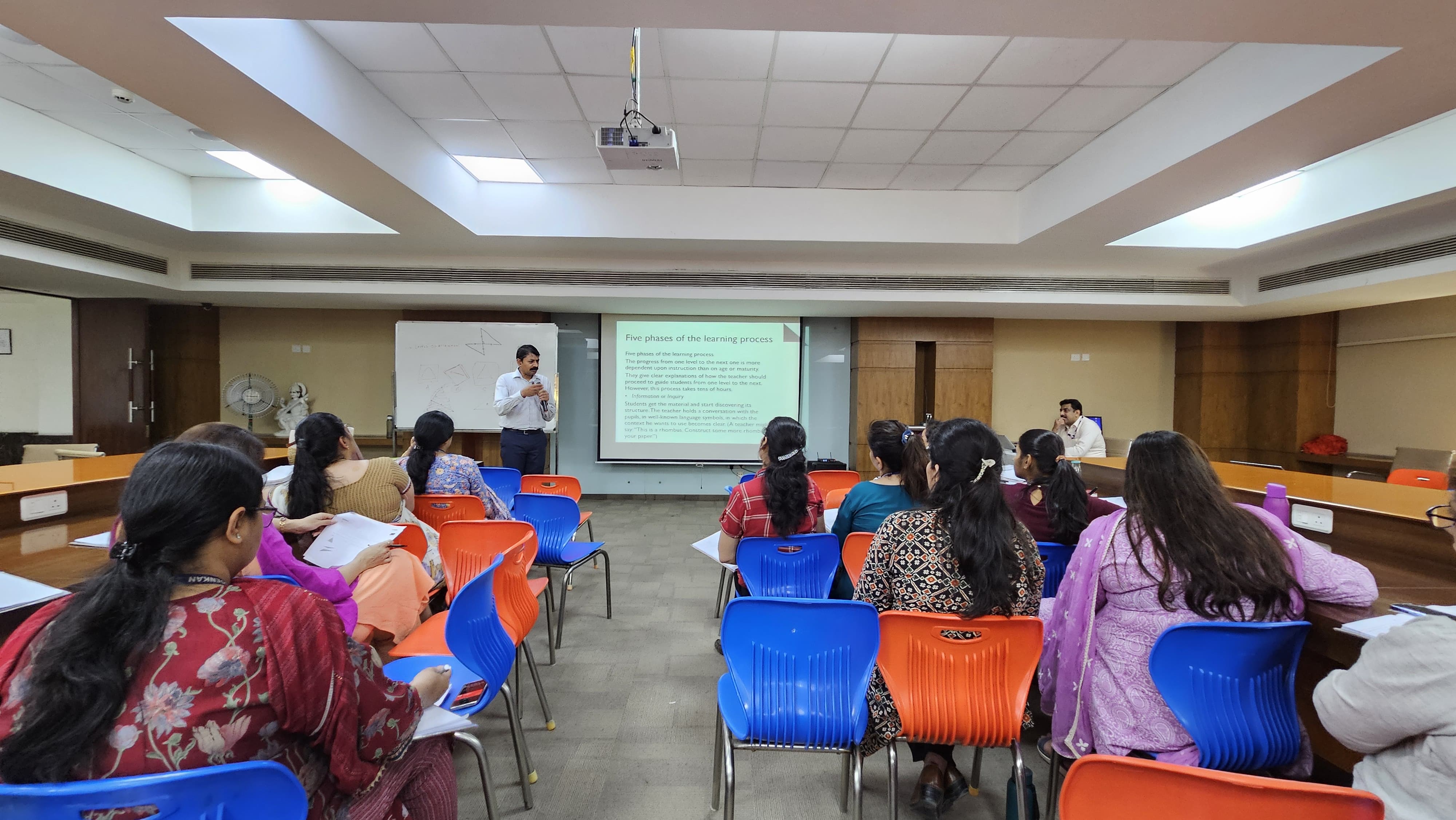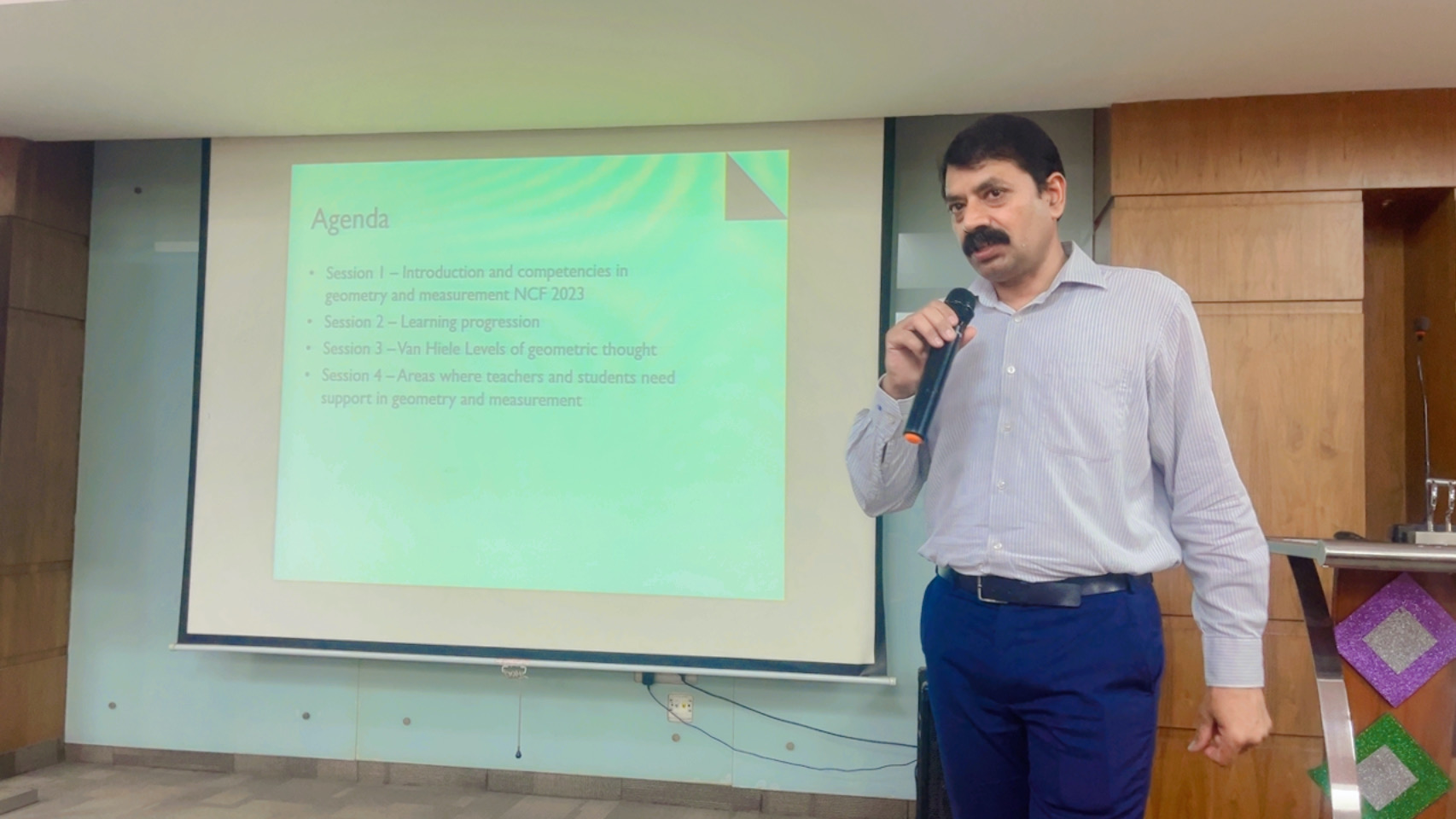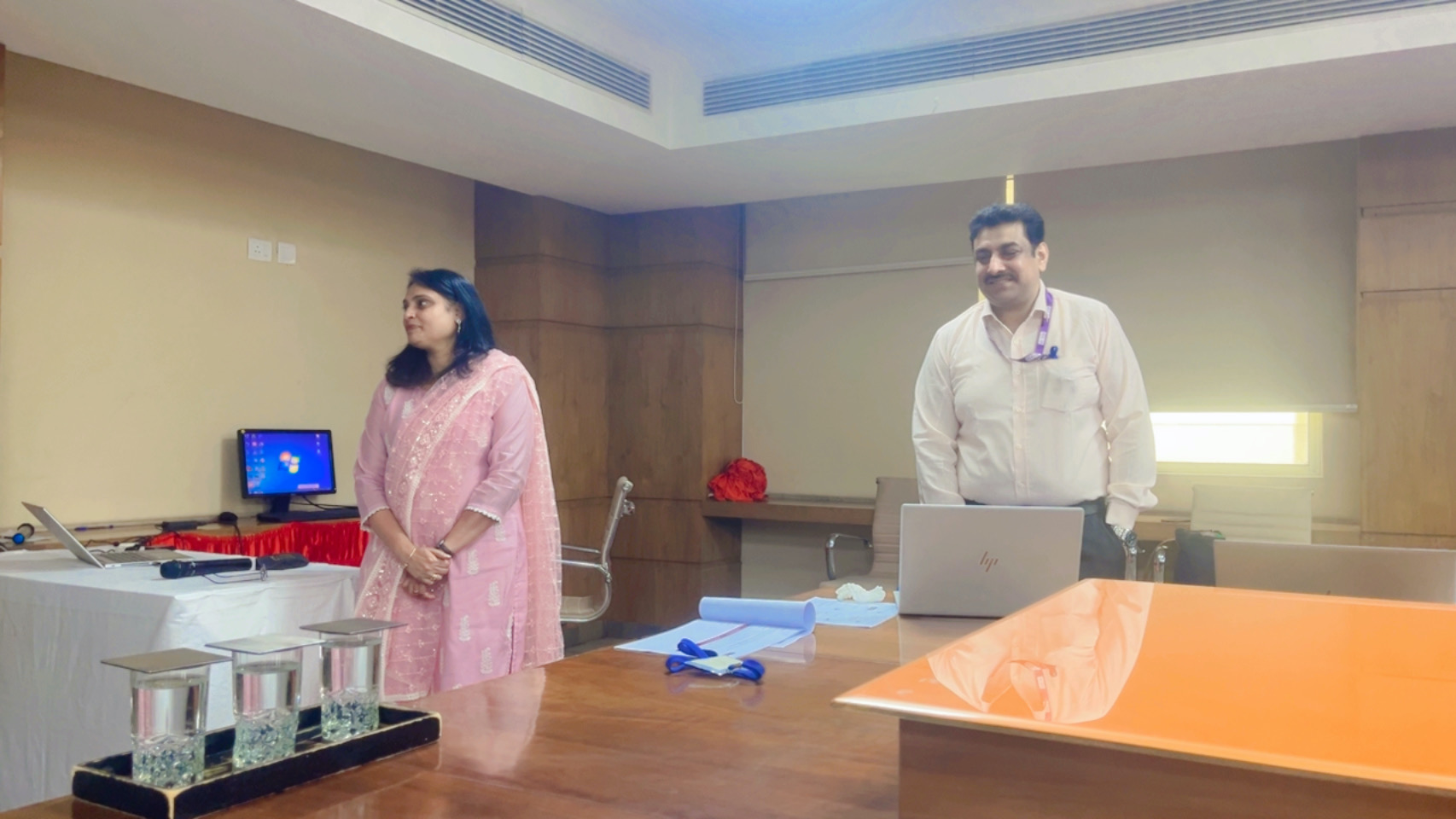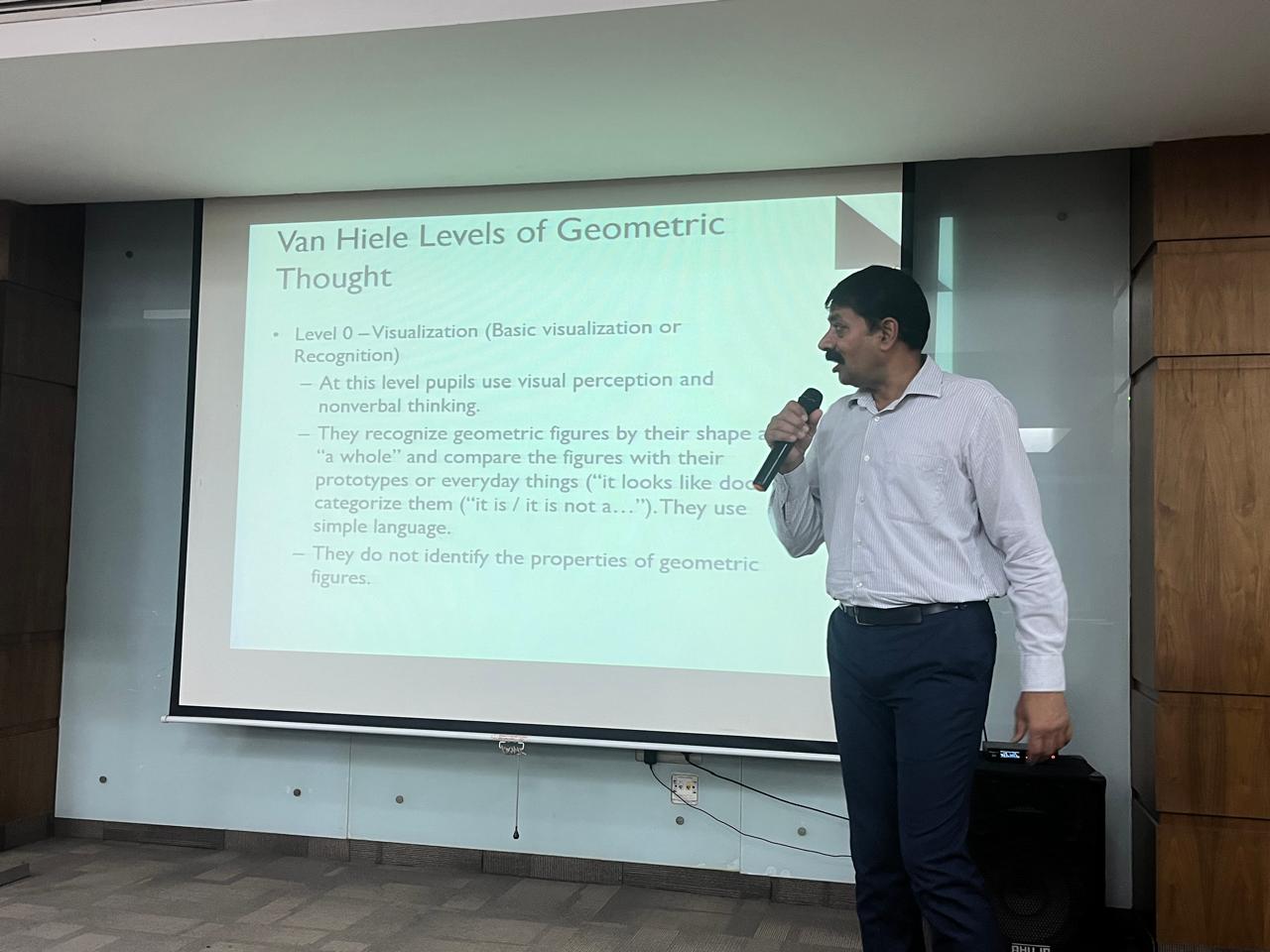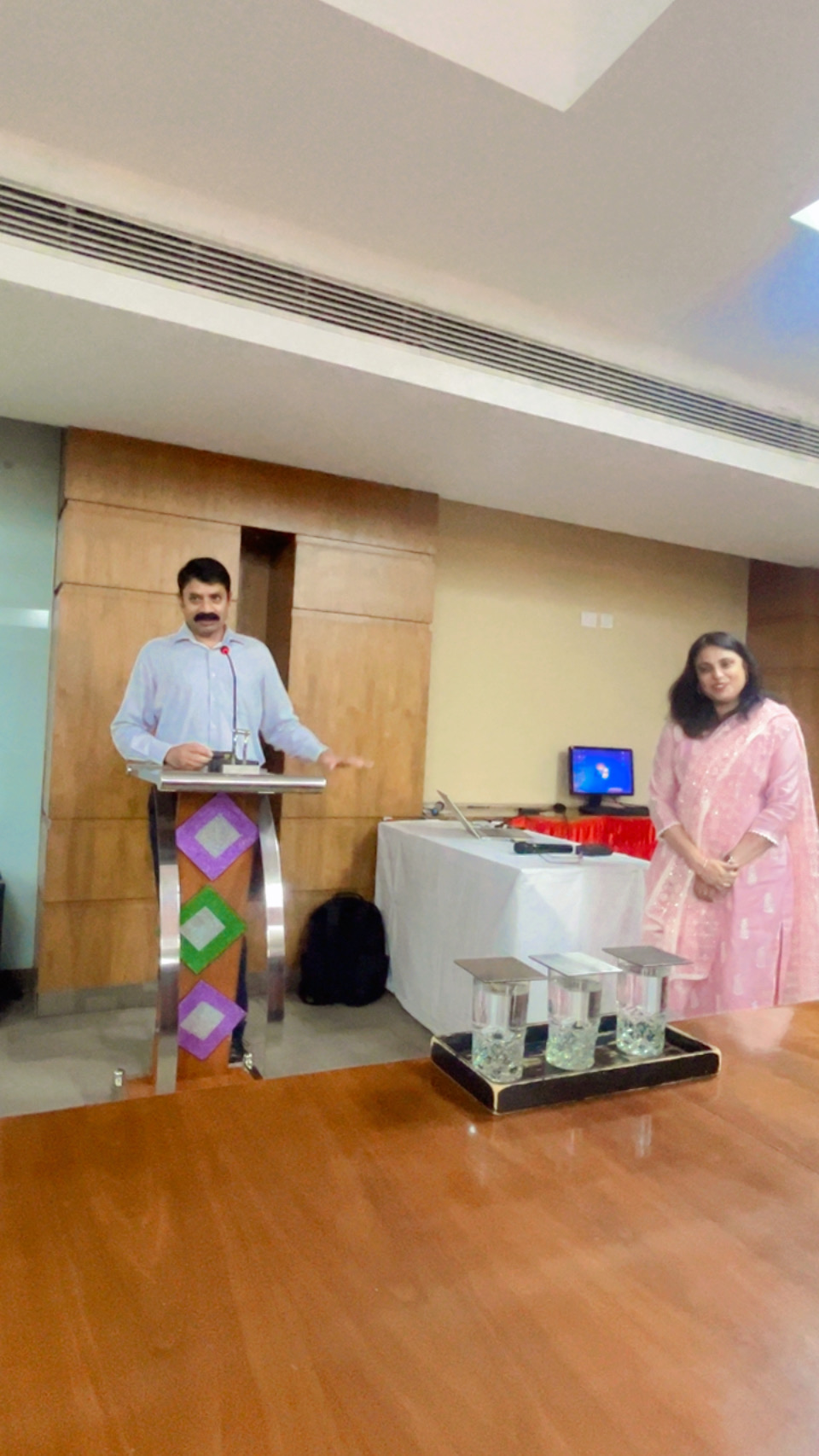INSTRUCTIONAL METHODS FOR TEACHING GEOMETRY AND MEASUREMENT
(MAY 21, 2024)
The workshop on Competencies in Geometry & Measurement (NCF 2023) was conducted by Mr. Neelam Yadav - a Senior Research Fellow and a postgraduate in Mathematics from the university of Rajasthan. He was accompanied by his team associates - Mr. Atul Jha and Ms. Zulekha Lakhani. The session was attended by the Mathematics Faculty.
The session was divided into four phases - Introduction to competencies in Geometry and Measurement as per NCF 2023, Learning Progression and its levels, Sharing the research work of Van Hiele levels of geometric thought and its relevance in day-to-day teaching and Challenges faced by the teachers in the transaction of curriculum in Geometry and Measurement, common errors made by the students and areas where students need support.
The workshop began with a pre-assessment of NCF 2023 and then delving deep into the broad aims of education as articulated in NCF 2023 and guidelines to be adopted to help bring changes in education for positive transformation in India’s school curricula. The flow from goals of Education to curriculum aims and goals at each stage of learning led to the development of competencies and framing learning outcomes to develop the core competencies of the domain was discussed at length to build on the key focus areas.
The educators were introduced to the Van Hiele theory of geometric thought that describes how young students learn geometry. It postulates five levels of geometric thinking which are visualization, analysis, abstraction, formal deduction and rigor. Each level uses its own language and symbols. It was proposed that students must be taken through these five sequential levels of learning to help them achieve a more sophisticated level of geometric thinking. Thus, the method and organization of instructions, as well as the content and materials used, are important areas of pedagogical concern. To address these issues, the Van Hiele proposed five sequential phases of learning: inquiry, directed orientation, explication, free orientation, and integration. Instruction developed according to this sequence promotes the acquisition of a level. The educators came together and discussed the challenges faced by students in learning key geometrical concepts and mastering them and how Van Hiele model can help them.
The session involved various activities to engage the educators and help them reflect on their classroom environment, pedagogies and learning progression of their children. Towards the end of the session, valuable insights were given for correct and age-appropriate usage of Math vocabulary, adhering to the Math conventions, using non prototypes of geometric figures in the classroom and giving the students numerous opportunities for logical reasoning.
In a nutshell it was an intensive and enriching session with a lot of take aways for mathematics educators.

